How to Handle Diabetes in Dogs and Cats
Dogs and cats, just like their owners, can suffer from diabetes. The cause can range from a genetic predisposition to an unhealthy lifestyle. However, fear not – with proper management, your beloved dog or cat can still lead a long and happy life. Read on to learn about the signs and symptoms of diabetes in dogs and cats, treatment options and more.
DOG HEALTH HEALTH
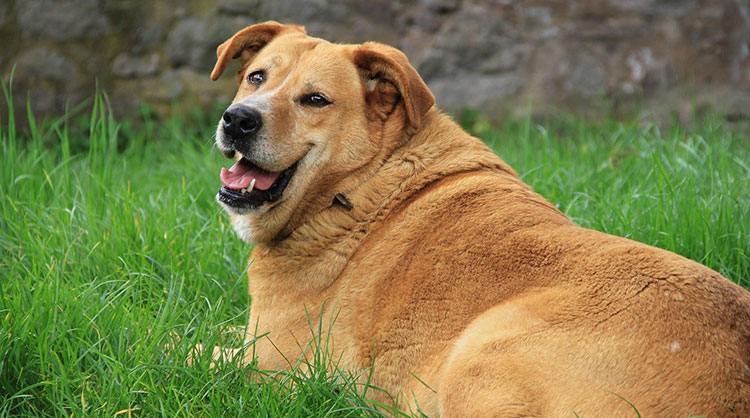
Posted by bravectosouthafrica – 21 November 2019
What is Diabetes in Dogs and Cats?
Diabetes mellitus is a disease affecting the pancreas. It causes the afflicted dog or cat’s body to either:
- Stop producing insulin
- Produce insufficient insulin
- Respond abnormally or become resistant to insulin
More on Insulin
What Does Insulin Do?
When your pet eats a meal, their body absorbs glucose (i.e. sugars) via the intestines. The glucose then enters their bloodstream, where it’s used as fuel to power all necessary activity. Meanwhile, insulin is released by the pancreas. The insulin allows glucose to exit the bloodstream and enter cells (in the muscles, kidneys, liver, brain, etc.) where it is used for both energy and growth.
Simply put, insulin is the key needed to unlock cells and let glucose in. Insulin lowers blood glucose levels, allowing entrance to cells where it can provide energy for the body.
Diabetes and Insulin
Diabetes causes your pet’s insulin production to drop or makes their pancreas insensitive to the effects of insulin. When this happens, glucose can’t leave the bloodstream or be used as energy by cells. This causes blood glucose levels to skyrocket and leads to an overflow of glucose into your pet’s urine.
Since the body is unable to properly utilise the glucose it needs for energy, it resorts to other means. These abnormal energy production processes (e.g. the breakdown of fat) don’t depend on glucose and eventually leads to the build-up of toxic by-products. This can cause your pet to become gravely ill.
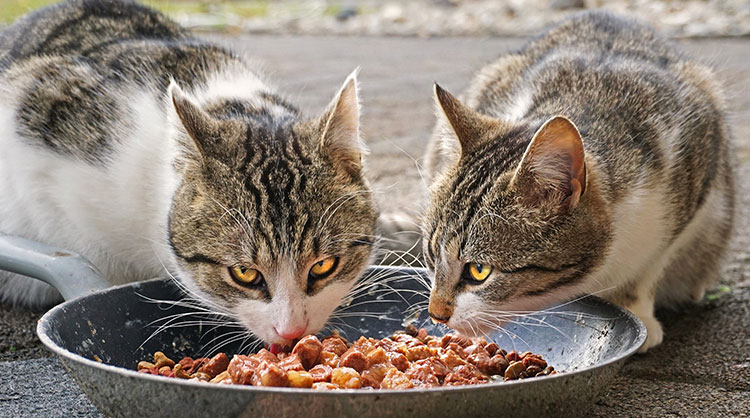
The Causes of Diabetes in Dogs and Cats
There’s no one cause of diabetes in dogs and cats. It can be caused by a variety of factors, including:
- Genetics
- Breed
- Underlying or undiagnosed medical conditions – e.g. pituitary disease, adrenal disease and obesity
- Certain medications – e.g. steroids
Pets can develop type 1 and 2 diabetes, but thankfully both diseases are manageable with the correct veterinary and at-home care.
Canine companions are more likely to develop type 1 diabetes, which is caused by an insulin deficiency. Humans and pets with type 1 diabetes need routine insulin injections to help them process glucose correctly. Unfortunately type 1 diabetes is irreversible.
Feline friends, on the other hand, are likelier to develop type 2 diabetes. Dogs can develop type 2 diabetes as a result of obesity and certain medications and diseases. This type is the result of insulin resistance, which occurs when the body produces insulin, but the cells don’t respond to it. Thankfully, type 2 diabetes is reversible with changes to diet and exercise, as well as weight loss.
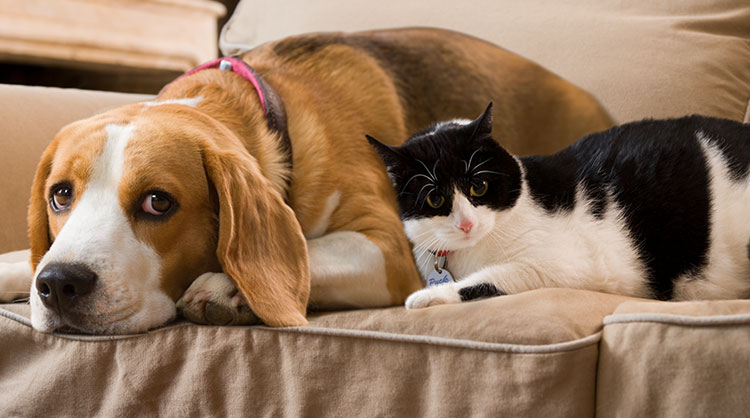
The Signs and Symptoms of Diabetes in Dogs and Cats
Your beloved furry friend may be suffering from diabetes if they display the following signs and symptoms:
- Increased urination – The overflow of sugar in the bloodstream ends up spilling out into the urine. This leads to your pet having to urinate more frequently or even having accidents inside the house.
- Urinary tract infections – Secondary urinary tract infections may occur more frequently. The increased amount of sugar in your pet’s urine makes their bladder the ideal breeding ground for bacteria.
- Kidney failure – Cats are especially prone to developing this secondary issue of diabetes and may initially be diagnosed with acute kidney problems or chronic renal insufficiency. The sugar increase in your cat’s urine is extremely damaging to their kidneys, leading to the kidneys becoming overexerted. The kidneys’ tiny filters, called nephrons, can’t deal with the added burden of filtering sugar and this leads to kidney dysfunction. Your pet can be diagnosed with kidney failure through either urinalysis or blood work.
- Increased thirst – You may notice that your pet is emptying their water dish more often. This is because an increase in urination will also lead to an increase in thirst. Apart from being hallmark signs of diabetes, increased thirst and urination could also be symptoms of other, more serious, health issues. Be sure to schedule an appointment with your vet if you notice either of these symptoms.
- Increased appetite – Your pet may also be hungrier than usual. This is because sugar and insulin also control the satiety centre in the brain. When sugar can be absorbed it sends out the message to the body that makes our pets feel full and stop eating. Less sugar absorption means continued hunger.
- Weight loss – Because your pet is being starved of vital nutrients, they may often display an increased appetite. Despite eating more, their cells aren’t using the energy from the food efficiently, leading to weight loss.
- Vision problems – Dogs are primarily affected by this, but cats may also grow blind as a result of cataracts caused by diabetes.
- Tiredness, a lack of energy – You may also notice that your pet is especially lethargic and lacking in energy. This is caused by the lack of blood sugar in your pet’s cells. Dogs and cats suffering from type 2 diabetes will often sleep more and have a lack of desire for any activity (such as going for a walk, running around or engaging in play).
- Weakness in hind limbs (unique to cats) – Known as the plantigrade stance, you may see your cat walking on their back ankles instead of high on the pads of their feet (i.e. how cats normally walk). You’ll notice this immediately, as it looks completely unnatural. Fortunately, this is reversible if your cat starts receiving treatment for diabetes.
The signs and symptoms of diabetes in dogs and cats develop over time, so it is important that you note the start of any changes in their normal behaviour as soon as possible. Remember, the sooner your beloved pet receives a diagnosis and correct treatment, the sooner they can go back to their normal, happy selves – and a great quality of life!

The Risks of Untreated Diabetes in Dogs and Cats
Dogs and cats suffering from untreated diabetes are more vulnerable to develop a host of other health issues. The most common of these include:
- Cataracts
- Blindness
- Nerve deterioration
- Bladder infections
- Kidney disease
- Paralysis
- Coma
- Gangrene
- Ketoacidosis
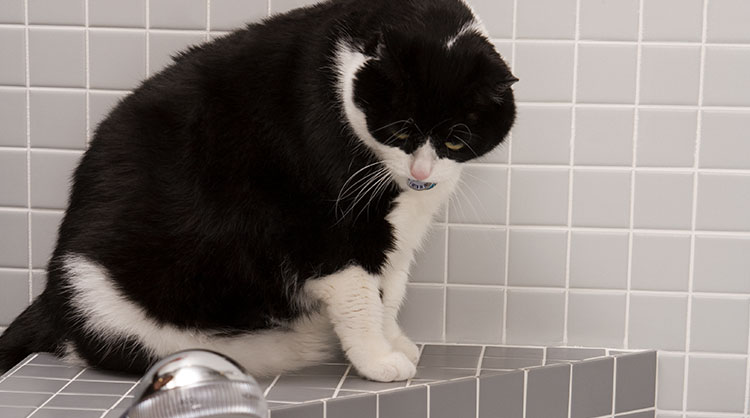
How to Prevent Diabetes in Dogs and Cats
It’s important to note that there isn’t a guarantee that your furry companion won’t develop diabetes, even if you do follow the upcoming advice. Their chances of developing the disease will, however, be greatly reduced and you should see a positive change in their overall health.
In order to prevent your faithful pup developing diabetes, you should help them to:
- Maintain a healthy weight – An obese or overweight dog is more likely to develop diabetes than one who’s a healthy weight. Watching your dog’s weight will also help prevent the development of other health issues, including arthritis, heart problems and stroke.
- Get enough exercise – Frequent and enough exercise will help keep your dog healthy, fit and at the correct weight.
- Attend regular vet check-ups – Early intervention will lead to the best possible prognosis for your pooch. Not only will a vet be able to diagnose your dog with diabetes, but they will also be able to diagnose any other conditions that could lead to diabetes in the future.
- Get spayed – Proceeding to spay your female dog will help prevent a variety of potential health complications such as pregnancy, female-related cancers and diabetes.
Cat owners can prevent their precious kitties from developing diabetes by:
- Watching their weight – Just as is the case with humans and dogs, obesity is the main risk factor for cats developing diabetes. A fat cat may look cute, but it sure isn’t good for their health!
- Feeding them the correct diet – Speak to your vet about what diet is best to feed your cat. As cats are carnivores: they need high amounts of protein, low amounts of carbohydrates, and zero grains. Luckily, there are prescription diets available, made specifically for diabetic pets.
- Giving them enough exercise and enrichment – As is the case with dogs, providing your cat with enough exercise will aid in them maintaining a healthy weight. It will also help reduce any stress your feline friend may be experiencing. Enriching their environment with cat toys will also help keep them entertained and active.
- Scheduling and sticking to regular check-ups – It may seem like a hassle to lug your cat to the vet when they look outwardly healthy, but it’s crucial in receiving an early diagnosis of any underlying health issues. The earlier treatment can start, the better for both your pet and your finances!
- Having annual blood and urine tests done – Ask your vet about having urine and blood tests done on your cat at least once a year. This will help to determine if everything is all right inside your kitty.
- Minimise the use of steroid treatments – Some chronic illnesses (e.g. asthma, allergies and inflammatory bowel disease) are frequently treated with steroids. Steroids are unfortunately known to decrease how effective insulin works, despite the treatment often being a lifesaver. Speak to your vet about regularly monitoring your cat’s blood and urine for any signs of diabetes, should they be taking steroids regularly.

Diagnosing Diabetes in Dogs and Cats
A diabetes diagnosis in pets isn’t all that uncommon. Dogs usually develop diabetes between 4-14 years old. A diagnosis normally follows at around 7-10 years old. Most cats who develop and are diagnosed with diabetes are aged six years and older.
Dogs will ordinarily be diagnosed with diabetes during their middle or senior years. Female dogs are especially prone to developing diabetes, but it isn’t unheard of for younger dogs of either gender to be diagnosed. Early onset diabetes could indicate that your dog has a genetic predisposition for the disease and their relatives may receive the same diagnosis.
Specific dog breeds are also more prone to developing diabetes. They include:
- German shepherds
- Doberman pinchers
- Labrador retrievers
- Golden retrievers
- Cocker spaniels
- Dachshunds
- Toy poodles
- Terriers
Cats who are middle aged or senior are also more likely to be diagnosed with diabetes, as are neutered males, those who are overweight, and specific breeds like the Siamese.
It is likely that your dog or cat will be diagnosed with diabetes if the following is found after your vet runs some tests:
- Glycosuria (i.e. an excessive amount of sugar present in the urine)
- Elevated levels of serum fructosamine
- Chronic hyperglycaemia
A diabetes diagnosis is based on your pet’s consistent fasting hyperglycaemia and glycosuria results (a once-off reading doesn’t indicate diabetes). 75-120 mg/dL is considered the normal fasting value for both dogs’ and cats’ blood glucose levels.
Unfortunately, a stressed out cat can experience elevated blood glucose levels, as well as an increased presence of glucose in the urine. This makes it much more difficult to get a correct diagnosis.
Cat owners may find it necessary to have additional tests done to confirm the diagnosis. Screening for conditions commonly associated with diabetes (e.g. urinary tract infections, diagnosed via a urine culture) will help get a definitive answer.

Treating Diabetes in Dogs and Cats
If your faithful furry companion is diagnosed with diabetes, treatment can include:
- Diet changes
- Oral medications
- Insulin therapy
- Exercise
Should your vet suspect insulin resistance, it is important to diagnose and treat any concurrent disease(s) your pet may have, as part of managing their diabetes.
Treatment often varies from pet to pet – your vet will advise on the best possible course of action for managing your dog or cat’s diabetes. The majority of dogs and cats diagnosed with diabetes are insulin dependent and require insulin injections as part of their treatment.
The good news is that diabetic remission is possible in cats, so insulin supplementation may simply be needed temporarily. Different types, doses and frequencies of insulin may be necessary to initially get your pet’s diabetes under control. Don’t worry: your vet will tell you exactly how and when to give your pet their insulin.
Be sure to ask your vet about registered veterinary insulin, which can also be given via the Vetpen, making administration quick and easy for you.
Your vet will tell you exactly how to correctly handle, administer and store your pet’s insulin, as each type of insulin is different. As soon as your dog or cat starts their diabetes treatment, they will have to visit the vet regularly for check-ups to monitor, evaluate, and potentially adjust, their treatment. It’s extremely important to use an insulin treatment that is registered and approved for veterinary use.
Completely curing your pet’s diabetes is unlikely, though not impossible. The overarching goal of insulin dependent diabetes treatment, however, is to reduce the severity of any clinical signs and give your pet the best, healthiest and happiest life possible.
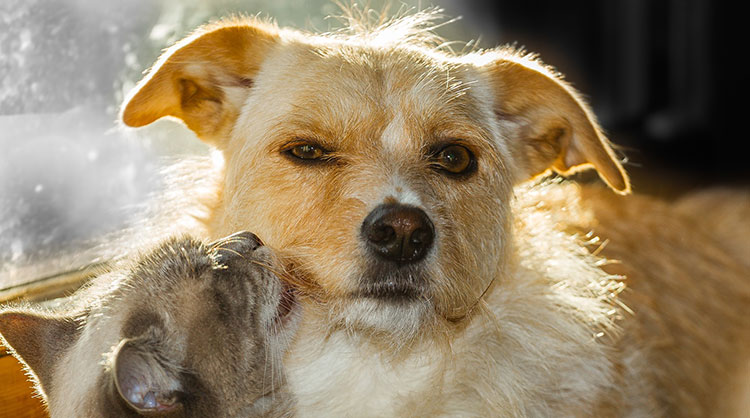
Special Diabetic Diets for Dogs and Cats
Adjusting your diabetic dog’s or cat’s diet is an important and necessary step in controlling their disease. As aforementioned, overweight pets diagnosed with diabetes will benefit from losing the extra kilograms. However, being underweight can be a problem as well. Your vet will best advise you on what changes to make to your furry friend’s diet.
Some of the crucial features of a good diabetic dog diet include:
- Consistency – Feeding your dog the same food every day will ensure more consistent blood glucose levels through the course of the day, matching the need for the supplemented insulin.
- High in fibre and complex carbohydrates – This will ensure that glucose is released steadily from your dog’s gut.
- Being the right caloric value – This will help your dog achieve and maintain their ideal weight.
- Good timing – Your dog’s meal(s) should be given so that the glucose absorption from their gut takes place at the same time as the peak action of administered insulin.
- Fat restricted – Fatty foods might not raise blood glucose levels, but they’ve been linked to insulin resistance.
Crucial features of a good diabetic cat diet include:
- Consistency – Just like dogs, cats suffering from diabetes should consume the same diet daily.
- Being low in carbohydrates – Multiple commercial cat food options are available nowadays and consulting with your veterinarian will ensure that an appropriate brand or formulation is chosen to keep your cat healthy.
- Containing a high quality, highly digestible source of protein – Steer clear of meals containing soybeans or gluten, rather opt for foods such as cooked egg and meat.
- Being the right caloric value – Your cat will be able to achieve and maintain a healthy weight by consuming the correct amount of calories.
- Fat restricted – Restricting your diabetic cat’s fat intake will help manage their insulin.
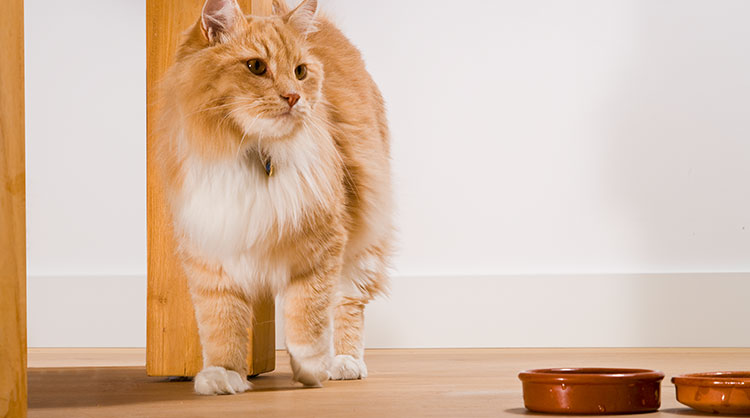
Additional Considerations for Diabetic Diets for Dogs
If your pup is the one suffering from diabetes, you may have a few extra considerations to keep in mind about their nutrition:
- Are they underweight? If your dog is indeed underweight, a diet high in fibre won’t be a suitable solution as this could lead to more weight loss. It may be necessary for your dog’s fibre intake to be restricted, as well as for them to take additional supplements to reach their ideal weight. Speak to your vet about the best solution for helping your dog regain a normal, healthy weight.
- Will they eat the food? Not all dogs are good eaters – some are downright picky! It can be difficult to (suddenly have to) coax your dog into eating a high fibre, low fat diet. Keep in mind that changing their diet at home is far easier than while in the animal hospital. However, changing their diet at home can also prove difficult.
- Should this be the case, you can stabilise your pup on its normal food, but you will have to feed them the same food each day. Their insulin doses may also become slightly higher as a result.
A diabetic dog’s meals have to be monitored and timed closely. This is because their meals need to be consumed so that there is food present in their gastrointestinal tract when the administered insulin is at the height of its efficiency. Feeding your diabetic dog like this will help reduce fluctuations in blood sugar concentrations, minimising the occurrence of hypoglycaemic and hyperglycaemic episodes.
If your dog receives insulin once a day:
- Administer your dog’s insulin after they’ve eaten their breakfast (2/3 of their daily food allowance). This will allow you to see if your dog is feeling and eating well before giving them their daily dose of insulin.
- Your dog’s second meal (the remaining 1/3 of their daily food allowance) should be served between 6-8 hours later.
Should your dog receive insulin twice a day:
- Make sure that your dog didn’t suffer a hypoglycaemic episode in the night.
- Ideally, you’ll divide your dog’s daily food allowance into four smaller meals, although this is seldom possible.
- Instead, feed your dog two meals of about the same size, spaced evenly throughout the day.
- Their first meal of the day (1/2 of their daily food allowance) should be given just prior to their morning dose of insulin. Once again, this allows you to check if your dog is feeling and eating well before administering the injection.
- Your dog’s second meal of the day (the other 1/2 of their daily food allowance) should be given between 10-12 hours later, just before administering their second dose of insulin.
Looking to treat your diabetic pup? Have a look at the tasty diabetic dog treat recipe in Bravecto®’s homemade dog biscuits article.
For more information on diabetes in pets, visit MSD Animal Health’s website on canine and feline diabetes, as well as the Pet Diabetes Month website.
Also, be sure to check out how Sugar the cat and Spike the dog deal with their diabetes here and here.
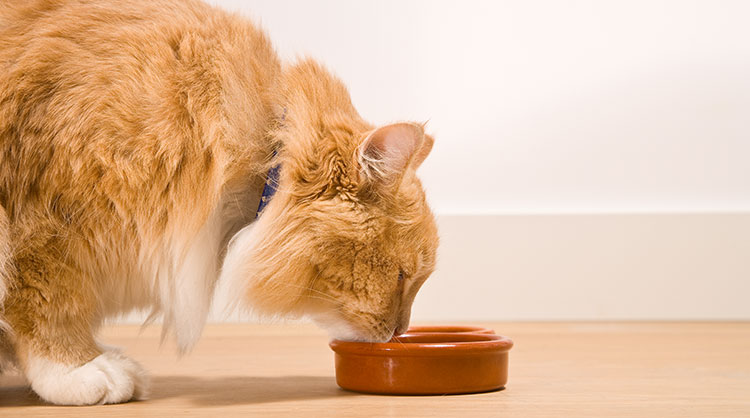
Keep Your Dog and Cat in Tip-Top Condition
Despite your best efforts, you may not always be able to prevent your beloved dog or cat from developing diabetes. You can, however, prevent them from contracting tick- and flea-borne viruses with Bravecto®. Available for both dogs and cats, Bravecto® will keep your pets safe from and get rid of any existing ticks, fleas and mites.
Bravecto® for Dogs is available in either a tasty chew or convenient topical form, while Bravecto® for Cats is available in topical form.
A single dose of the Bravecto® Spot-On for Cats treatment will protect your feline friend against ticks, fleas and ear mites for 3 whole months. Bravecto® Spot-On for Dogs will protect your canine companion against ticks for 4 months and fleas for 6 months in a single dose, while one Bravecto® Chew will give 12 weeks of tick and flea protection.
That’s fast-acting and long-lasting protection against ticks, fleas and mites, all in a single dose. Help keep your dog or cat safe from external parasites – buy Bravecto®.

Subscribe to our Newsletter
Get to know your furry friend better! Sign up for all things dog- or cat-related.
The Hairy Facts about the dreaded hairball
12 April 2021
Help! My dog’s barking mad! Volume 2
12 April 2021
Your Itchy, Scratchy Cat – All About Cat Skin Problems
12 April 2021
The Dog’s Diet: A Bone of contention?
01 April 2021
Mango Fly Worms: How to Spot and Eliminate them
Posted on November 28,2019
Managing Mange And Mites In Your Dog
Posted on June 11,2018
Why Do Cats Purr and How? Learn What Your Cat Is Saying
Posted on October 14,2020
How to Get Rid of Ear Mites in Dogs
Posted on November 06,2019









